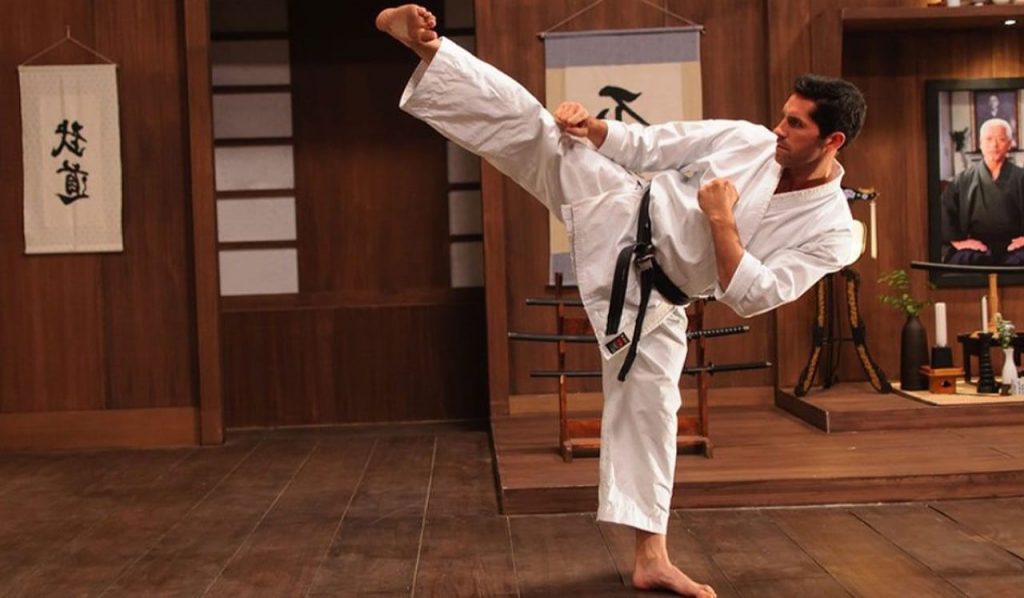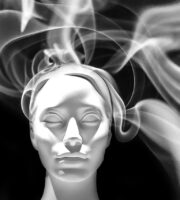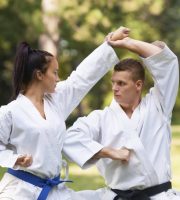Hapkido is a martial art created and very popular in Korea. It is in demand in other Asian countries as well, since Korea was a colony of Japan at the time of its creation. The creator of Hapkido was Choi Young-sol (also known as Yoshida Takujuku) and his fate is also linked to both countries, as indicated by his Japanese middle name. From this material you will learn about hapkido: what kind of sport it is, the history of its creation, features and differences from other oriental martial arts.
The creator of the direction was born in 1904 in Korea, his family was very poor. They lived near a factory whose owners were a married couple from Japan. They took a liking to the lad, and when they left for their homeland, they offered to take him with them. The parents didn’t mind since they didn’t have enough money to support the child. That’s how Choi Eunsol found a second homeland and a second name. Because of this, many people are still confused as to which country the hapkido belongs to.
His adoptive parents gave the boy to a Buddhist monastery, as they understood that they could not devote enough time to his upbringing. It should be noted that raising such a child did require a lot of time and effort; he was very temperamental and restless. In time, even the monastery was no longer able to cope with the task, and the abbot found an excellent candidate for the role of teacher for the capable but difficult Choi. It turned out to be Sokaku Takeda of Daito-ryu aikijutsu. It was considered a great honor to be taught by such an eminent master, and not everyone could afford it.
At the end of World War II, Jensol, like other of his compatriots, returned to his homeland. Circumstances forced him to start his life from scratch: His suitcase was stolen at the train station. It contained all the money he had at the time.
Ki Meditation training in Hapkido
Ki Meditation is a form of meditation that is often practiced alongside Hapkido training. Ki, which means “energy” in Korean, is a central concept in both Hapkido and Ki Meditation. Ki Meditation involves deep breathing, visualization, and mindfulness techniques designed to increase awareness of one’s energy and develop the ability to control and direct it. Through regular practice, practitioners of Ki Meditation can increase their ability to focus, reduce stress, and improve overall physical and mental health.
In Hapkido, Ki Meditation is often used to cultivate the internal strength and focus necessary to effectively execute techniques. The practice of Ki Meditation can also help to increase flexibility, balance, and coordination, all of which are important for Hapkido practitioners. Additionally, Ki Meditation can help to develop a sense of calmness and mental clarity, which can be helpful during high-stress situations.
History of hapkido
Korean martial arts became widespread in 1948. One February day, there was a fight among shoppers in line for grain in the street of Daegu city. It was seen from the window of the office of Seo Boksup, the manager of the winery. He was a 1st dan in judo and went out to calm down the brawlers. However, he saw the following picture: one man fighting off several opponents amazingly, using an unfamiliar technique with some unbelievable moves. It’s not hard to guess that this man was Choi Eunsol, which is how So Boxul met him.
Before the introduction, Choi was unknown to anyone as a martial arts instructor. No one wanted to approach a stranger and learn an unknown style of fighting. He himself valued himself as a master and even with a complete lack of demand made his price tag very high. Looking ahead, we can say that his lessons later really cost about ten times more than the average price tag on the classes of taekwondo widespread at that time. But at that time the master of hapkido was very poor, he was selling rice balls on the city streets to earn at least some money to feed himself.
Seo was impressed by the combat techniques he saw and took his new acquaintance on full financial support. They began to train together in a specially equipped room at Seo’s work and did not stop doing so even during the Korean War. After the liberation of Korea, Seo’s father began congressional activities and needed a head of security and a personal bodyguard. It was hard to find someone more suitable for this position than Choi. Seo himself was also involved in this service.
In the 1950s, the political struggle in Korea was fought through criminal methods, so Choi and Seo had many occasions to prove that they were true masters. Their fame spread across the country, especially after they opened the Daehan Hapki yukwonsul dojang, which literally translates as the Korean Hapki Soft Martial Arts Hall.
The comrades traveled around the country demonstrating their sporting art to all comers. Often fame flew ahead of them, as rumors of Father Seo’s political confrontations spread very quickly. In addition to the ordinary students, famous followers emerged, who spread the martial arts around the world.

Famous followers
Choi’s most famous disciples were Kim Muheung and Chi Hanjae. The former was trained in a Buddhist monastery to learn the ancient kicking technique. After his return, the techniques he received from the monks were added to the martial art, and a character that reads “do” and translates as “path” was added to the name itself. The full name is now hapkido, the teaching of the way to harmonize one’s own energy.
Kim Muheung later created his own offshoot of shinmukwon, his disciples included such famous weighty figures as Lee Hanchul – developing the trend in South America, Won Kwanghwa – founder of the Muslimwon trend, Lee Banju – created hwarando, this separate martial art, Kim Wutak – took over the development of the discipline in Canada, as well as many others.
As for Chi Hanjae, it was he who founded hapkido in its modern form. In 1953, when he was at school age, he studied under Choi, just one year later he opened his own gym, two years later he set up his own organization, completely separating himself from his former mentor. He also trained under him famous masters, such as Han Bongsoo, Kang Jongsoo, Kim Eunjin, Hwang Dae-kyu, and many others.
Chi Hanjae’s influence increased significantly in 1960, at which time he became the personal bodyguard of President Park Geunhee. However, the political situation in those years was still unstable, with power and influence being replaced by accusations and scorn. Chi was even accused of plotting against the president, for which he was punished with a year in prison. After his release, he left his homeland and decided he would be better off living in the United States.
Basic Principles
There is no world association of hapkido. In the 1960s there were several federations in different countries and their founders claimed that they were the founders of real hapkido. One of the figures named Jun Mukwana wanted to unite all the organizations in Korea, but ended up creating another one. The most active association at the moment is the International Federation in the Republic of Korea, led by Meng Jangnam, as well as the All-Korean Association led by Hwang Dokkyu, associations under the Path and Energy Society and New Village movements. The most recognizable organization in the West is called the World Federation, headed by Men Gwangsik, with its main branch based in the United States.
Despite the large number of schools and approaches, the philosophy is the same. It is based on an awareness of the circulation of “ki”, cosmic energy, which is in all living things.
It is believed that Ki determines a person’s behavior, helps him find his place in life and direct his efforts in the right direction.
It is mandatory for any representative of this martial art to believe in these tenets and observe them:
- Every object in nature is endowed with energy;
- Everyone’s body combines the forces of heaven and earth;
- Everyone must develop their energy potential;
- energy in combat is applied in eight directions;
- there is no attack, only self-defense;
- everyone must care for the prosperity of his country and the world;
- any member of society must respect the morals and orders accepted in that society;
- it is obligatory to show respect for the person of another person and to be modest in one’s conduct toward him;
- everything that needs to be done must be done in the best way possible;
- an adept of hapkido respects all martial arts.
The difference from many other martial arts is that from the first dan a fighter already knows all the basic techniques. This is not just an angular execution of techniques, but a honed skill. To pass the second dan you have to demonstrate the same techniques but with time limitations. For the third dan you need to learn how to show yourself in uncomfortable conditions, for example, with eyes closed or sitting. At the same stage weapons are connected: swords, sticks, knives. After the third dan is obtained, the work on oneself passes into the format of psychological training for mental improvement.
Important features
A number of features distinguish hapkido from other disciplines:
- non-provision of support. The opponent’s strength is accepted and used for its own purposes. If he makes a straight attack, you have to leave in an arc and at the same time make a throw based on the force applied by the opponent;
- moves in an arc. It is they who represent the opportunity to keep every movement of the opponent under control, to keep him in front of you, bypassing the line of attack;
- smoothness of movement, it’s called the water principle;
- When striking, the arms are not straightened all the way out, so their trajectories are curved. The legs are kicked both on the lower and upper body, they can be performed backwards. There is a lot of jumping, often in a jump hit with two legs at once;
- An important emphasis is placed on close combat, pain control, and the use of knees and elbows.
It is clear from the description that it is a martial art, not a show art. It is often criticized for the large number of techniques that are forbidden in other arts. Perhaps that is why the system came out so effective; in Korea it is used to train police and military officers.
Whether weapons are used depends on the style. Some are self-defense without any weapons, others use shortened sticks, staves, swords or knives. The body of a trained fighter becomes his weapon, because he can use his hands, elbows, fingers as an open palm or folded into a fist, legs, knees, even his head.
There are no championships in this sport, as it is an applied discipline. However, hapkido is a martial art with a lot to see. Fans can watch the fighters at demonstrations. It is especially interesting to watch the performance of experienced masters. You can determine the degree of skill by the color of the belt, the beginners have white, the masters – black. This color hierarchy is accepted in many martial arts.







